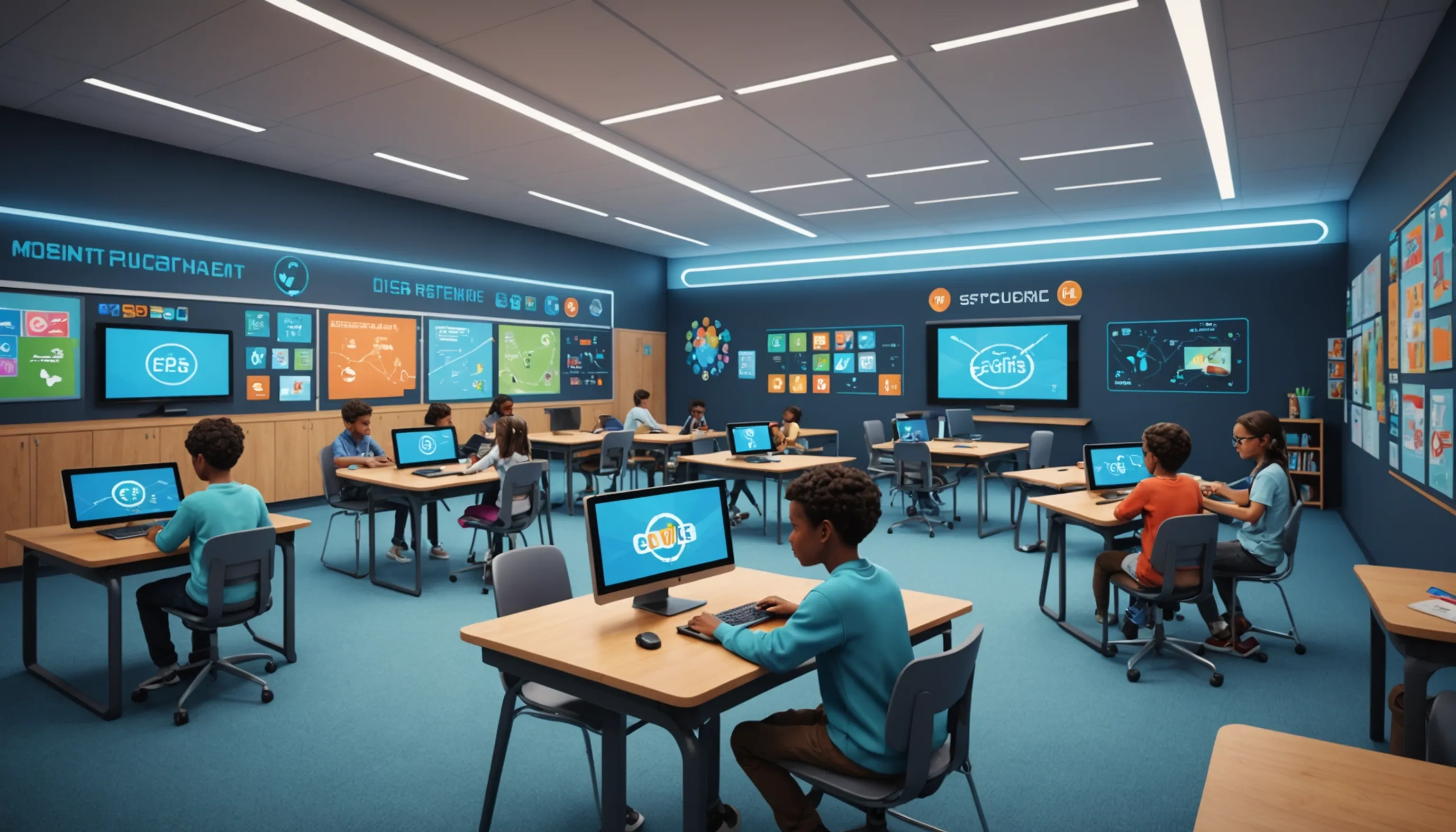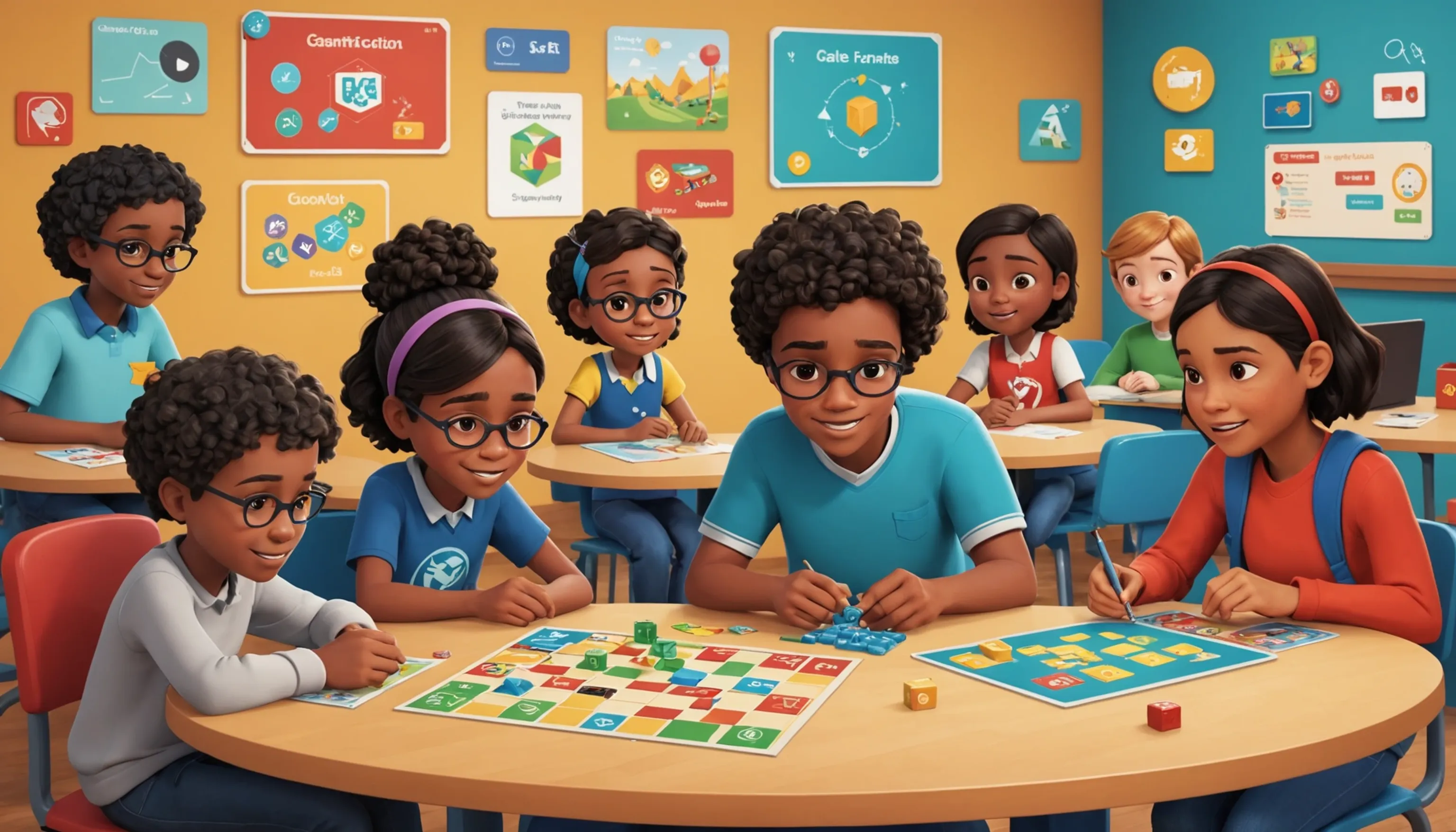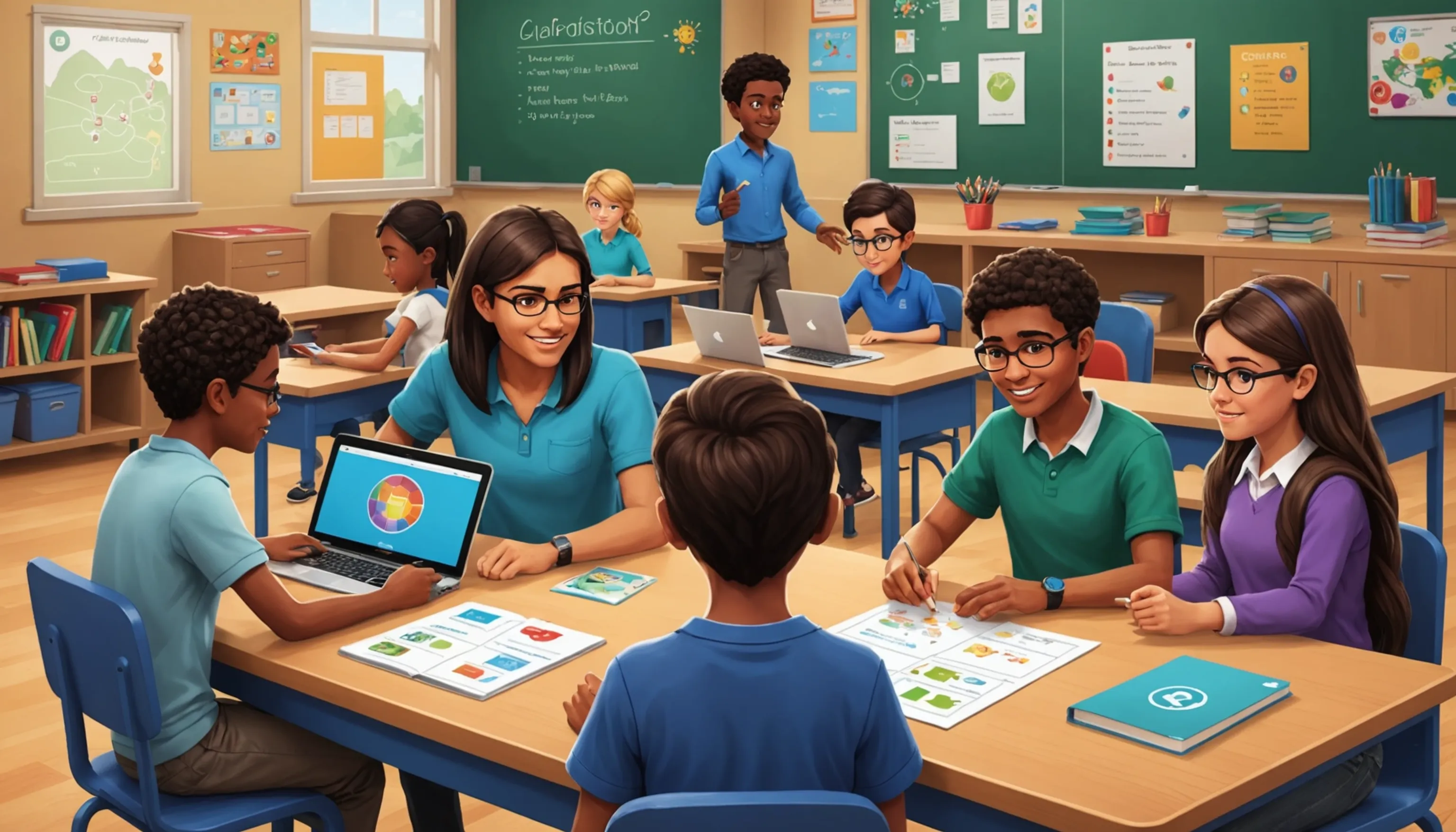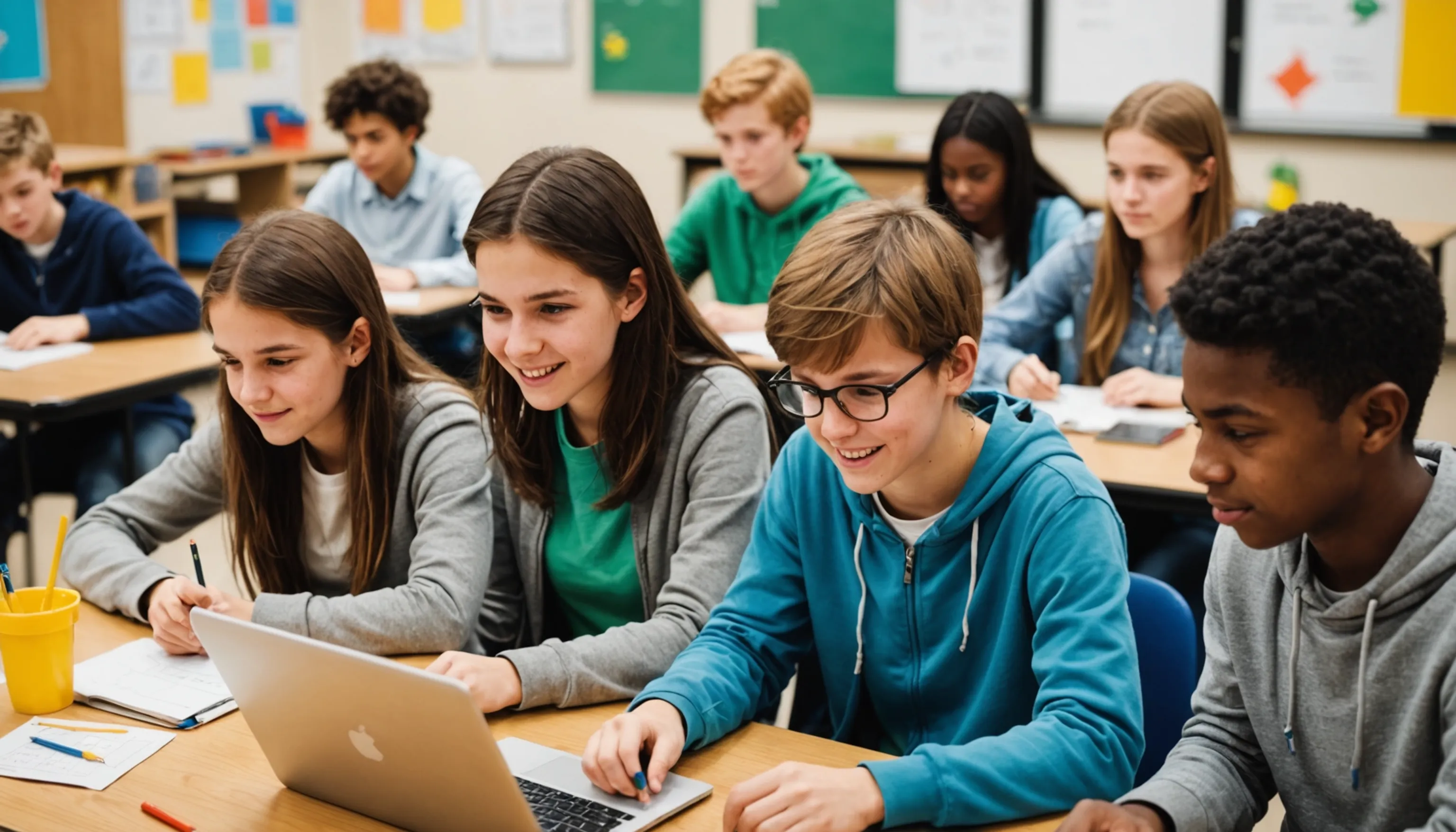All Learning Will Be Gamified in the Future
 HvWHenry van Wagenberg
HvWHenry van Wagenberg
The Future of Education: Gamification in Learning
The future of education is set to be transformed by gamification in learning. This innovative approach incorporates game elements into the educational process, making learning more engaging and interactive for students. By using game mechanics, such as points, levels, and rewards, educators can motivate teenagers to participate actively in their studies.
As traditional methods may often feel monotonous, gamification introduces a fresh perspective, encouraging collaboration and competition among peers. With advancements in technology, the integration of gamified learning experiences is expected to grow, paving the way for a more dynamic and enjoyable educational environment.
What is Gamification in Learning?
Gamification in learning refers to the integration of game design elements in non-game contexts to enhance the educational experience. This approach leverages the inherent motivation that games provide to engage learners, making the process of acquiring knowledge more enjoyable and effective. By incorporating elements such as points, badges, levels, and challenges, educators can create a more interactive and immersive environment for students.
At its core, gamification utilizes the principles of game mechanics to motivate students to learn. For instance, students can earn points for completing assignments, participate in leaderboards to foster a sense of competition, or unlock new content as they progress through learning modules. This not only makes learning fun but also encourages continuous participation.
Moreover, gamification can cater to various learning styles, allowing students to learn at their own pace and in their preferred manner. For example, visual learners may thrive in interactive simulations, while kinesthetic learners benefit from hands-on activities.
Incorporating gamification in learning also promotes collaboration among peers, as students often work in teams to solve challenges or achieve common goals. This team-oriented approach fosters communication skills and builds a sense of community within the classroom.
As technology continues to evolve, the potential for gamified learning will expand, offering new opportunities for educators to engage students and enhance their educational journey.
Benefits of Gamified Learning for Teenagers
Gamified learning offers numerous benefits for teenagers, transforming the educational experience into a more engaging and productive journey. One major advantage is increased motivation. By incorporating game elements, such as rewards and challenges, students are more likely to participate actively in their learning process. This motivation often leads to better academic performance and a deeper understanding of the material.
Another significant benefit is improved retention of information. Research shows that when learning is enjoyable and interactive, students are more likely to remember the content. Gamified activities often encourage repetition in a fun way, reinforcing knowledge and enhancing long-term memory.
Additionally, gamified learning promotes critical thinking and problem-solving skills. Many gamified platforms present real-world challenges that require students to think creatively and strategically. This not only helps in developing essential cognitive skills but also prepares teenagers for future situations they may encounter in their careers.
Collaboration is another key benefit of gamified learning. Many gamified activities encourage teamwork, allowing students to work together to achieve common goals. This collaboration fosters communication skills and social interaction, which are crucial in today’s interconnected world.
Lastly, gamification allows for personalized learning experiences. Teenagers can progress at their own pace, choosing the challenges that suit their skill levels. This customization helps to cater to diverse learning styles, ensuring that every student can thrive in their educational journey.

How Gamification Engages Students
Gamification engages students by transforming traditional learning into an interactive and enjoyable experience. By incorporating game-like elements into educational activities, teachers can captivate students' attention and maintain their interest over extended periods. One of the primary ways gamification achieves this is through the use of rewards and incentives. When students earn points, badges, or unlock levels for completing tasks, they feel a sense of accomplishment that motivates them to continue participating.
Moreover, gamification introduces an element of competition, which can be particularly effective in engaging teenagers. Leaderboards and team challenges encourage students to strive for excellence, pushing them to improve their skills and knowledge. This competitive spirit can foster a healthy environment where students are eager to outperform their peers while also learning collaboratively.
In addition, gamified learning often involves storytelling, which helps to contextualize the material and make it more relatable. When students see a narrative behind the content, they are more likely to become emotionally invested in their learning journey.
Interactivity is another critical factor; gamification often includes quizzes, simulations, and hands-on activities that require active participation. This hands-on approach encourages deeper engagement and enables students to apply their knowledge in practical scenarios.
Finally, gamification allows for instant feedback, helping students understand their progress and areas for improvement. This immediacy fosters a growth mindset, encouraging them to embrace challenges and learn from their mistakes.
Examples of Gamified Learning Tools
There are numerous gamified learning tools available that enhance the educational experience for students. Some popular examples include:
- Kahoot! - A game-based learning platform where teachers create quizzes and students answer in real-time.
- Classcraft - A role-playing game that encourages teamwork and rewards positive behavior in the classroom.
- Quizizz - An interactive quiz tool that allows students to learn at their own pace while competing against peers.
- Duolingo - A language-learning app that uses game mechanics to teach vocabulary and grammar.
These tools make learning enjoyable and effective for teenagers.
Popular Gamification Platforms in Education
Several popular gamification platforms have emerged in education, each designed to enhance student engagement and learning experiences. One of the most widely used is Kahoot!, which allows educators to create interactive quizzes and surveys. Students participate in real-time, answering questions using their devices while competing against peers. This platform not only makes learning fun but also fosters a sense of community in the classroom.
Another notable platform is Classcraft, a unique role-playing game that integrates educational objectives with game mechanics. In Classcraft, students create characters and earn rewards for positive behavior and academic achievements. This approach promotes collaboration and encourages students to support one another in their learning journey.
Edmodo is also popular, providing a social learning environment where teachers can share resources, assign tasks, and create polls. It incorporates gamification elements such as badges and rewards to motivate students and recognize their efforts.
Seesaw is another effective platform, allowing students to document their learning through various multimedia formats. Teachers can give feedback and awards based on student contributions, fostering a sense of ownership over their education.
Lastly, Quizizz is an interactive quiz platform that enables teachers to create fun assessments that students can complete at their own pace. With game-like features such as leaderboards and memes, Quizizz keeps students engaged while reinforcing their knowledge.

Gamification in Classroom Activities
Integrating gamification in classroom activities can significantly enhance student engagement and motivation. One effective method is through interactive quizzes and competitions. For example, teachers can use platforms like Kahoot! or Quizizz to create fun quizzes that challenge students' knowledge while encouraging friendly competition. Students can compete individually or in teams, earning points for correct answers, which boosts their excitement and participation.
Another way to gamify classroom activities is by incorporating role-playing scenarios. This approach allows students to take on different roles in a story or situation relevant to the subject matter. For instance, in a history lesson, students could role-play historical figures, enhancing their understanding of events while making learning more interactive and immersive.
Project-based learning can also be gamified. By setting specific goals and milestones, teachers can turn projects into quests where students earn rewards or badges for completing tasks. This not only motivates students but also fosters a sense of achievement as they progress through the project.
Additionally, using classroom management tools like Classcraft can help gamify behavior and participation. Students can earn points for positive actions, which they can use to unlock rewards or special privileges.
Finally, incorporating technology, such as augmented reality (AR) games related to the curriculum, can bring lessons to life, making learning both fun and memorable. These gamified activities not only boost engagement but also cultivate essential skills such as collaboration, problem-solving, and critical thinking.
Gamified Homework and Assessments
Gamified homework and assessments are innovative approaches that make the learning process more engaging and enjoyable for students. By incorporating game elements into assignments, educators can motivate students to complete their work with enthusiasm while reinforcing key concepts.
One effective strategy is to design homework assignments as quests or challenges. For instance, teachers can create a series of tasks that students need to complete to earn points or badges. These tasks could include research projects, creative writing assignments, or problem-solving exercises. By framing homework as a challenge, students are more likely to take ownership of their learning and strive to complete the tasks.
Another approach involves using platforms like Classcraft, which allows teachers to gamify homework by assigning experience points for completed assignments. As students accumulate points, they can unlock rewards or special privileges, further incentivizing them to engage with the material.
Additionally, gamified assessments can transform traditional testing into interactive experiences. Instead of standard quizzes, educators can create game-based assessments where students answer questions in a competitive format. For example, using platforms like Kahoot! or Quizizz, teachers can host live quizzes that encourage participation and allow students to learn from their mistakes in real-time.
Furthermore, incorporating elements of storytelling into assessments can make them more relatable and enjoyable. When students can connect with the material through a narrative, they are more likely to be engaged and retain the information.
Challenges of Implementing Gamification
While gamification offers numerous benefits, there are also significant challenges of implementing gamification in education. One major issue is the potential for overemphasis on rewards, which may lead students to focus solely on earning points or badges rather than the learning process itself. Additionally, not all students respond positively to gamified approaches; some may feel alienated or disengaged.
Moreover, teachers may face difficulties in designing effective gamified activities that align with curriculum objectives. Limited resources and training can further hinder successful implementation, making it essential for educators to receive adequate support and professional development.
Potential Drawbacks of Gamified Learning
While gamified learning has proven to enhance engagement and motivation among students, it also comes with several potential drawbacks that educators must consider. One significant concern is the risk of fostering a superficial understanding of the material. When students focus primarily on earning points or badges, they may prioritize completing tasks over truly comprehending the content, leading to surface-level learning.
Another drawback is the potential for increased competition among students. While some level of competition can be motivating, excessive rivalry can create a stressful environment. Students who struggle to keep up may feel discouraged, leading to decreased self-esteem and a negative attitude toward learning.
Additionally, gamified learning can inadvertently exclude students who may not thrive in competitive settings or who have different learning styles. Not every student is motivated by game mechanics, and some may find the gamification elements distracting rather than helpful.
Moreover, the implementation of gamification requires significant time and resources. Educators must design and develop effective gamified activities that align with learning objectives, which can be challenging without adequate training or support.
Finally, over-reliance on gamification may diminish intrinsic motivation. When students become accustomed to external rewards, they may lose interest in learning for its own sake. Striking a balance between gamification and traditional learning methods is essential to create a well-rounded educational experience that fosters lasting engagement and curiosity.
Balancing Gamification and Traditional Learning Methods
Finding the right balance between gamification and traditional learning methods is crucial for creating an effective educational experience. While gamification can enhance engagement and motivation, it’s essential to integrate it thoughtfully with conventional teaching practices to ensure comprehensive learning.
One effective strategy is to use gamified elements as supplementary tools rather than replacements for traditional methods. For instance, educators can incorporate game mechanics into existing lesson plans, using quizzes or interactive activities to reinforce concepts taught through lectures or reading assignments. This approach allows students to benefit from both structured learning and engaging activities.
Additionally, educators should ensure that gamified activities align with educational objectives. By setting clear learning goals and outcomes, teachers can design gamified experiences that reinforce essential skills and knowledge. This alignment ensures that students are not only having fun but also achieving meaningful educational progress.
Moreover, it’s important to cater to diverse learning styles. While some students thrive in gamified environments, others may prefer traditional methods. Providing a variety of learning experiences—combining lectures, hands-on activities, and gamified tasks—can accommodate different preferences and foster a more inclusive classroom.
Furthermore, regular feedback is essential in both gamified and traditional settings. Teachers should provide constructive feedback to help students understand their progress and areas for improvement, regardless of the learning method used.
Ultimately, a blended approach that thoughtfully integrates gamification with traditional learning can create a dynamic educational experience that fosters both engagement and deep understanding.
